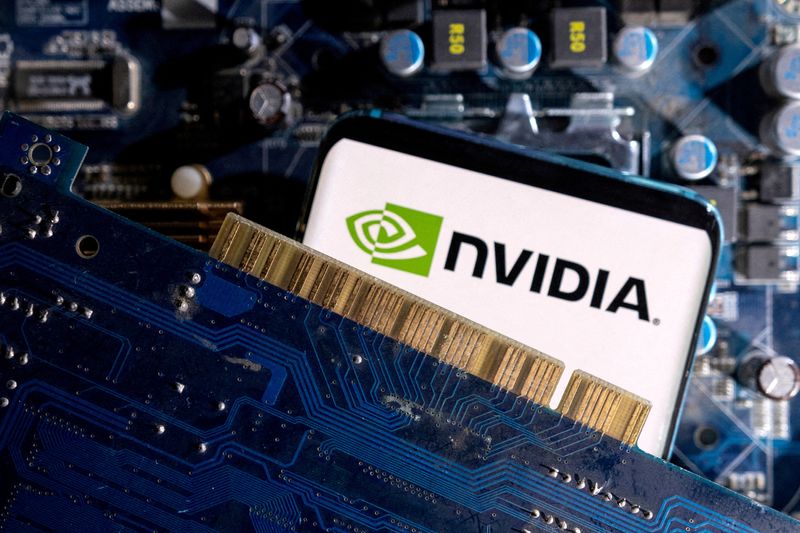By Noel Randewich
(Reuters) – Shares of Nvidia (NASDAQ:NVDA) rallied to a record high on Thursday, making the chipmaker the first company in history to surpass a stock market value of $3.6 trillion as Wall Street extended a rally sparked by Donald Trump’s return to the White House.
The dominant AI chipmaker’s shares rose 2.2%, lifted by broad investor optimism about tax cuts and lower regulations after the Republican candidate’s Tuesday election victory.
Nvidia’s stock market value ended the day at $3.65 trillion, beating Apple (NASDAQ:AAPL)’s record closing market capitalization of $3.57 trillion reached on Oct. 21, before the chipmaker on Tuesday overtook the iPhone maker as the world’s most valuable company, according to LSEG data.
Apple’s stock rose 2.1% on Thursday, leaving it with a market value of $3.44 trillion.
The S&P 500 technology index has surged over 4% in the two sessions since Trump won the election on Tuesday.
Nvidia has been the U.S. stock market’s biggest winner from a race between Microsoft (NASDAQ:MSFT), Alphabet (NASDAQ:GOOGL) and other heavyweights to build out their AI computing capacity and dominate the emerging technology.
The Silicon Valley chip designer’s stock has climbed 12% in November, with its value tripling so far in 2024.
Following this year’s surge, Nvidia now exceeds the combined value of Eli Lilly (NYSE:LLY), Walmart (NYSE:WMT), JPMorgan, Visa (NYSE:V), UnitedHealth Group (NYSE:UNH) and Netflix (NASDAQ:NFLX).
Analysts on average see Nvidia increasing its quarterly revenue by over 80% to $32.9 billion when it reports its results on Nov. 20, according to LSEG.
In June, Nvidia briefly became the world’s most valuable company before it was overtaken by Microsoft and Apple. The tech trio’s market capitalizations have been neck-and-neck for several months.
Microsoft’s market value stood at nearly $3.16 trillion, with its stock up 1.25% on Thursday.



